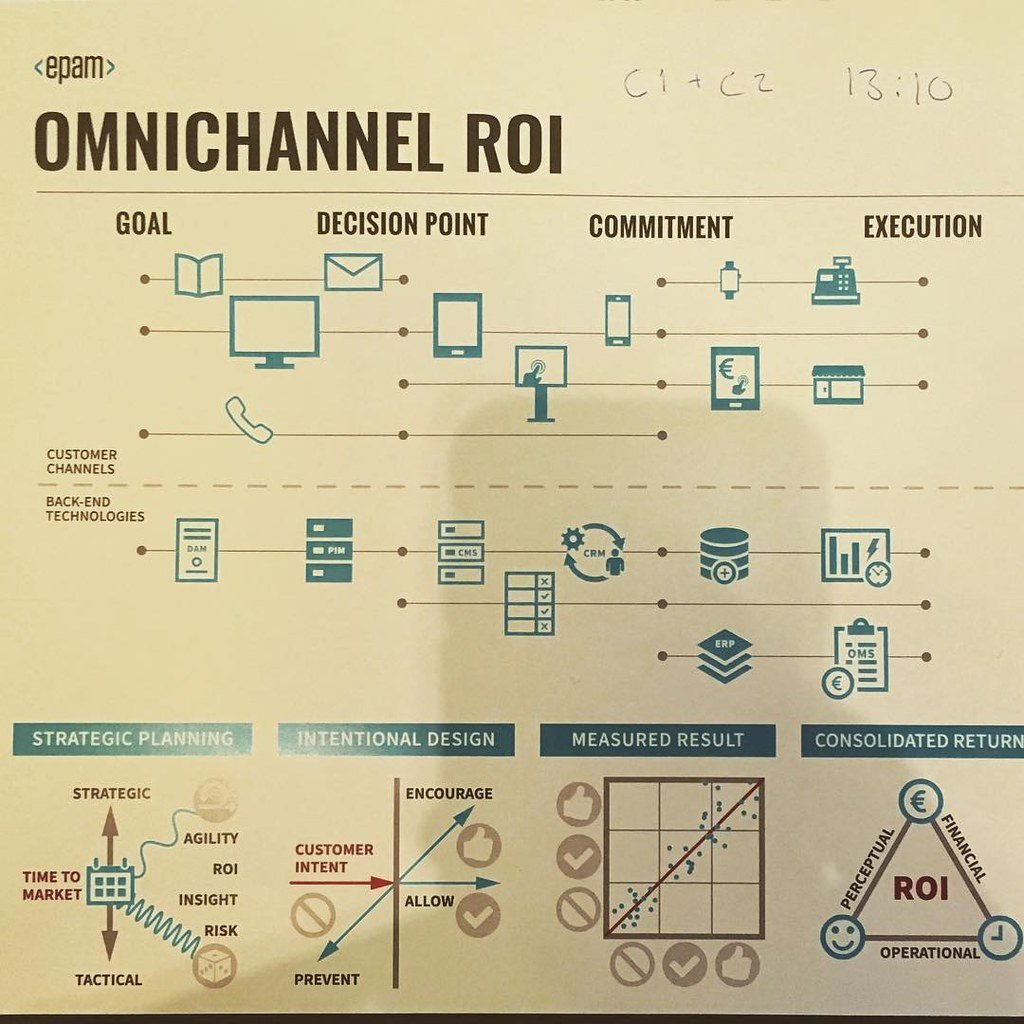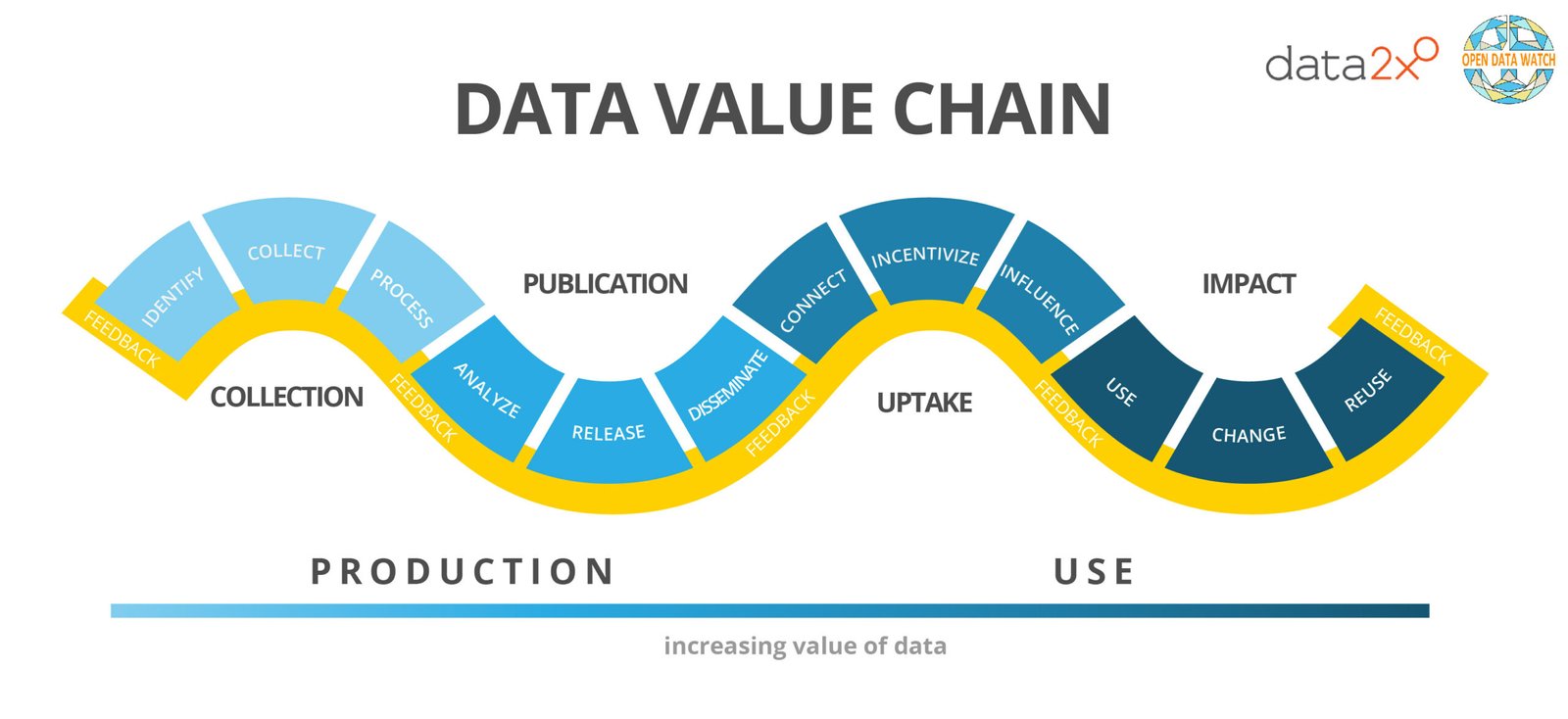In a world brimming with constant connectivity and endless options, retailers face an unyielding challenge – to master the art of channel harmony and deliver flawless omnichannel shopping experiences. From traditional brick-and-mortar stores to the insatiable realm of e-commerce, the need to seamlessly blend various touchpoints has become paramount. In this article, we delve into the enchanting intricacies of creating a comprehensive omnichannel strategy that not only captivates customers but also cultivates brand loyalty. Exploring the very essence of this artistic fusion, we unlock the secrets to crafting exceptional omnichannel shopping journeys that leave customers craving for more. Embrace the unparalleled wonders of channel harmony as we embark on this journey towards retail success.
Table of Contents
- Achieving Seamless Integration: The Key to Crafting a Flawless Omnichannel Shopping Experience
- Unleashing the Power of Data: Insights for Crafting Personalized Shopping Journeys
- Building Trust through Consistency: Effective Ways to Ensure Channel Harmony
- Optimizing Customer Engagement: Recommendations for Creating an Exceptional Omnichannel Experience
- Q&A
- The Conclusion

Achieving Seamless Integration: The Key to Crafting a Flawless Omnichannel Shopping Experience
In today’s digital age, creating a seamless integration across multiple channels is crucial for retailers aiming to deliver a flawless omnichannel shopping experience to their customers. By understanding the art of channel harmony, businesses can ensure that each touchpoint, whether it’s online, in-store, or through mobile devices, complements and enhances the overall shopping journey.
So, how can retailers achieve this harmonious integration? Here are a few key strategies:
- Data synchronization: Ensuring that customer data is consistently updated and accessible across all channels is vital. This means that whether a customer makes a purchase online or in-store, their preferences, purchase history, and loyalty points are accurately reflected and available across all touchpoints.
- Unified inventory management: To provide a seamless experience, it’s essential to have a single view of inventory across channels. This allows customers to check product availability in real-time and helps avoid disappointing scenarios such as purchasing an item online only to discover it’s out of stock in-store.
- Responsive design: With the increasing use of mobile devices for shopping, having a responsive website and mobile app is essential. Retailers need to ensure that their digital platforms are optimized for different screen sizes, making the shopping experience consistent and enjoyable for customers, regardless of the device they use.
By implementing these strategies, retailers can not only meet but exceed customer expectations in their omnichannel shopping journey. Brands like Nike and Starbucks have successfully embraced the art of channel harmony. Nike offers customers a seamless experience by allowing them to purchase items online and pick them up in-store, while Starbucks enables customers to order coffee via their mobile app and conveniently pick it up at a nearby store. These real-world examples demonstrate the power of seamless integration in delivering an exceptional omnichannel shopping experience.

Unleashing the Power of Data: Insights for Crafting Personalized Shopping Journeys
Personalized shopping experiences have become the Holy Grail of retail, and the key to unlocking this treasure trove lies within the power of data. In the digital age, customer data has emerged as a goldmine, offering retailers valuable insights into consumer preferences, behaviors, and shopping patterns. By harnessing this data effectively, retailers can craft tailored shopping journeys that engage customers, boost conversion rates, and foster brand loyalty.
So, how can you unleash the power of data to create personalized shopping journeys that truly resonate with your audience? Here are a few key insights:
- Segmentation: Start by dividing your customer base into meaningful segments based on demographics, purchase history, and behavioral data. This allows you to understand the unique preferences and needs of different customer groups.
- Recommendation Engines: Implement intelligent recommendation engines that leverage customer data to offer personalized product suggestions. This not only enhances the shopping experience but also increases the likelihood of upselling and cross-selling.
- Real-time Personalization: Embrace real-time personalization techniques that dynamically adapt to customer behavior and preferences. Whether it’s displaying personalized product recommendations or tailored promotional messages, real-time personalization creates a sense of individual attention that keeps customers engaged.
- Seamless Integration: To achieve flawless omnichannel shopping experiences, ensure seamless integration between physical stores, websites, social media platforms, and mobile apps. Customers should be able to transition effortlessly between channels, with their data and shopping history seamlessly accessible across all touchpoints.
By adopting these data-driven strategies, retailers can revolutionize their approach to customer engagement and pave the way for unforgettable shopping experiences. Unleash the power of data, and stay one step ahead in the art of channel harmony.

Building Trust through Consistency: Effective Ways to Ensure Channel Harmony
The key to successfully building trust with customers lies in providing a consistent and harmonious shopping experience across all channels. Consistency breeds familiarity, reliability, and ultimately trust. To achieve this, businesses need to carefully craft an omnichannel strategy that seamlessly integrates their various touchpoints, ensuring a seamless journey for the customer from start to finish.
Here are some effective ways to ensure channel harmony and build trust:
- Unified Branding: Maintain a consistent visual identity and messaging across all channels, including your website, social media platforms, physical stores, and mobile apps. This helps customers easily recognize and connect with your brand, regardless of how they interact with it.
- Seamless Cross-Channel Integration: Enable customers to effortlessly transition between channels, such as browsing online and purchasing in-store. Provide convenient features like click-and-collect or easy returns, ensuring a smooth and flexible experience.
- Tailored Personalization: Utilize customer data to deliver personalized experiences across channels. Proactive suggestions based on past purchases or browsing behavior can enhance the customer’s perception of your brand’s understanding and relevance to their needs.
- Responsive Customer Service: Be readily available to assist customers across all channels. Promptly respond to inquiries, concerns, or feedback, whether it’s through live chat, email, social media, or phone.
- Consistent Pricing and Promotions: Ensure prices and promotions are consistent across all channels. Avoid discrepancies that might confuse or frustrate customers, eroding trust in your brand.
In summary, achieving channel harmony requires careful coordination and consistency to foster trust with your customers. By implementing unified branding, seamless integration, personalized experiences, responsive customer service, and consistent pricing, you can craft a flawless omnichannel shopping experience that leaves a lasting positive impression.

Optimizing Customer Engagement: Recommendations for Creating an Exceptional Omnichannel Experience
When it comes to optimizing customer engagement, creating an exceptional omnichannel experience is key. The art of channel harmony lies in crafting a flawless omnichannel shopping journey that seamlessly integrates all touchpoints, from brick-and-mortar stores to online platforms and social media interactions. Here are some recommendations to help you enhance your customers’ experience:
- Unified Branding: Ensure consistent branding across all channels to create a cohesive and recognizable identity. This includes using the same colors, logos, and brand messaging across your website, mobile app, and physical stores.
- Seamless Integration: Integrate all touchpoints seamlessly, allowing customers to effortlessly move between channels. For example, allowing customers to start an online purchase and complete it in-store, or offering click-and-collect options.
- Personalization: Leverage customer data to deliver personalized experiences across channels. Tailor your recommendations, offers, and promotions based on previous purchases and browsing history.
- Responsive Design: Ensure your website and mobile app are responsive and optimized for a variety of devices. This way, customers can access and use your platforms easily, regardless of whether they’re using a smartphone, tablet, or desktop computer.
By implementing these recommendations, you can create an exceptional omnichannel experience that keeps your customers engaged, satisfied, and coming back for more. Remember, the key is to provide a seamless and cohesive journey across all channels, delivering personalized experiences that cater to your customers’ needs and preferences.
Q&A
Q: What is channel harmony and why is it important in omnichannel shopping?
A: Channel harmony refers to the seamless integration and alignment of all sales channels used by a retailer or brand, both online and offline. In the context of omnichannel shopping, it is crucial because it provides customers with a consistent and immersive shopping experience across various touchpoints. This consistency fosters customer loyalty and satisfaction, ultimately driving sales and business growth.
Q: How does channel harmony contribute to a flawless omnichannel shopping experience?
A: Channel harmony ensures that customers can transition effortlessly between different channels, such as websites, physical stores, mobile apps, and social media platforms. This cohesive experience is achieved by synchronizing product assortments, pricing, promotions, customer data, and overall branding across all channels. By eliminating any friction or discrepancies, channel harmony creates a seamless and uninterrupted journey for shoppers, enhancing their satisfaction and likelihood to make a purchase.
Q: What are the key elements to consider when crafting channel harmony?
A: To achieve flawless channel harmony, retailers need to pay attention to several key elements. First and foremost, a unified inventory management system across all channels is essential to avoid issues like out-of-stock items or conflicting stock information. Additionally, consistent pricing strategies, promotions, and personalized offers should be implemented uniformly across all platforms. It is also crucial to ensure a consistent and on-brand customer experience regarding visual aesthetics, tone of voice, and user interface design.
Q: How can technology assist in the creation of channel harmony?
A: Technology is a powerful ally when it comes to crafting flawless channel harmony. An integrated customer relationship management (CRM) system allows retailers to gather and analyze customer data across channels. This data-driven approach facilitates personalization and targeted marketing efforts. Furthermore, the use of cloud-based platforms enables real-time data sharing between all channels, reducing delays and inconsistencies. Automation tools can significantly streamline inventory management, order fulfillment, and customer service, ultimately enhancing the overall shopping experience.
Q: What are the challenges faced when implementing channel harmony, and how can they be overcome?
A: One of the main challenges is the coordination of disparate systems and processes within an organization. Aligning departments and integrating technology platforms may require strategic planning and investment. A lack of data synchronization can also hinder channel harmony; however, this can be mitigated with the adoption of a centralized data management system. Additionally, training and upskilling employees, from sales associates to customer service representatives, will ensure a consistent brand experience across all channels.
Q: What are the potential benefits retailers can gain by prioritizing channel harmony?
A: By prioritizing channel harmony, retailers can reap numerous benefits. Firstly, they can drive customer loyalty and satisfaction by offering a seamless and personalized shopping experience. This translates into increased customer retention and repeat purchases. Secondly, an enhanced omnichannel experience attracts new customers and expands the customer base. Thirdly, retailers can optimize inventory management, reducing costs associated with overstocking or understocking. Ultimately, prioritizing channel harmony contributes to increased revenues, improved brand reputation, and a competitive edge in the market.
The Conclusion
In conclusion, the art of channel harmony is an intricate dance in the realm of retail. Crafting a flawless omnichannel shopping experience requires a delicate balance of creativity and strategy. It is about seamlessly connecting the dots and ensuring that every touchpoint across various channels complements and enhances the overall customer journey.
Like a symphony conductor, retailers must harmonize their physical stores, websites, mobile apps, and social media platforms to create a cohesive and immersive experience. Each channel contributes its unique nuances to the overall melody of customer delight. From the sensory delights of a brick-and-mortar store to the convenience and accessibility of online shopping, the art lies in seamlessly transitioning between these diverse realms.
The key to achieving channel harmony is a deep understanding of the modern consumer. Retailers must study their behaviors, preferences, and expectations to create personalized and tailored experiences. By leveraging the power of customer data, advanced analytics, and machine learning, retailers can orchestrate a symphony of tailored recommendations, targeted promotions, and hyper-personalized interactions.
However, achieving flawless omnichannel harmony goes beyond technology alone. It requires a customer-centric culture that prioritizes continuous improvement and innovation. Retailers must embrace a mindset of flexibility, adaptability, and agility to meet the ever-evolving demands of consumers. By fostering a culture that embraces experimentation and welcomes feedback, retailers can fine-tune their omnichannel approach to perfection.
Ultimately, the art of channel harmony is not about taking a one-size-fits-all approach. It is about creating a dynamic and fluid ecosystem that allows customers to seamlessly move between channels, all while delivering a consistent and exceptional experience. It is about understanding that customers are not just looking to make a transaction; they are seeking an immersive and memorable journey.
As technology advances and consumer expectations evolve, the art of channel harmony will continue to evolve. Retailers must continuously refine their strategies, embrace innovation, and adapt to emerging trends. By keeping their finger on the pulse of the ever-changing retail landscape, retailers can stay one step ahead and continue to craft flawless omnichannel shopping experiences that captivate and delight their customers.

